Advanced Search
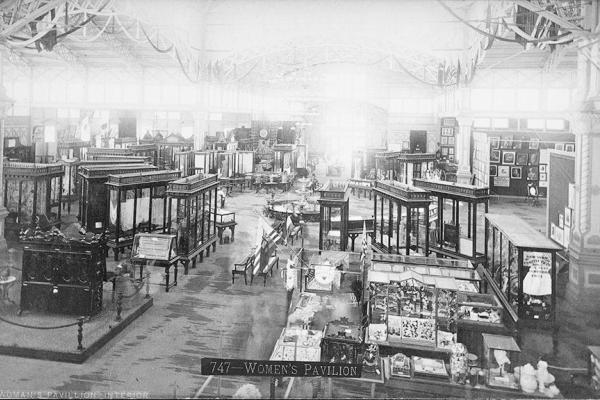
The only surviving interior photo of the Women’s Pavilion in the Centennial Exhibition collection, compiled in 1875 and 1876.
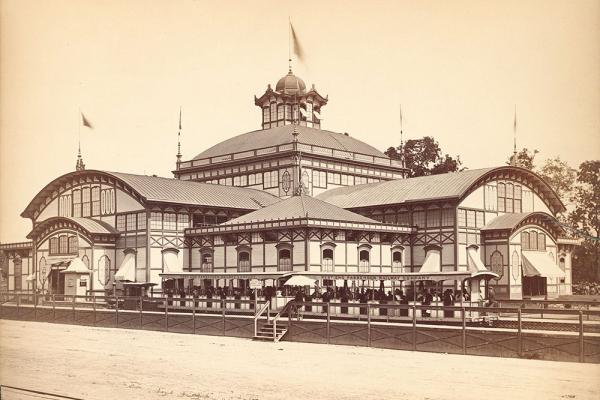
Organized, funded, and controlled by women, the Women’s Pavilion demonstrated American women’s contributions to arts, sciences, education, and industry.
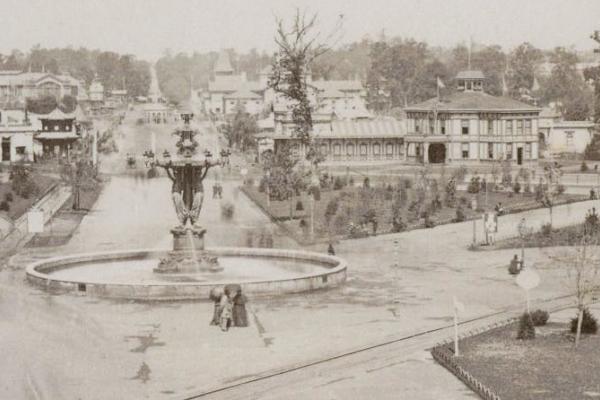
The view is north on Belmont Ave. Bartholdi’s Fountain takes center stage in the image. At left is the north tower of Machinery Hall. This photo was taken between Machinery Hall and Main Hall at the southern end of the Exposition. Belmont Ave. bisected the fairgrounds south to north. Horsecars used the rail tracks shown here to carry visitors along the interior perimeter of the fairgrounds.

Agricultural products on display and for sale, including fine wines, at Agricultural Hall.

Farm equipment and agricultural products were displayed in this massive building, which stood on the northeastern boundary of the Exposition grounds.
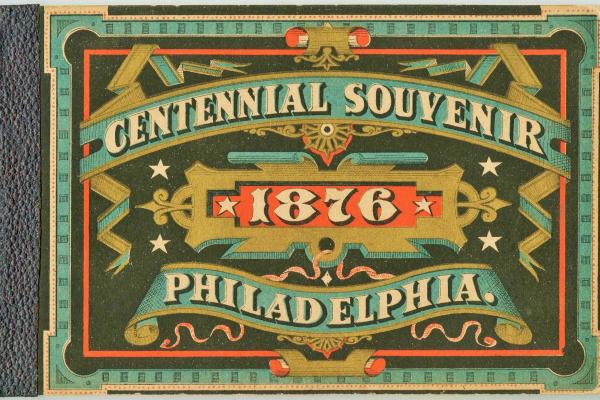
A colorful banner sold as a souvenir of the Centennial Exposition. Other souvenirs included postcards of the fair’s varied venues. The French marketed a large trove of these cards.
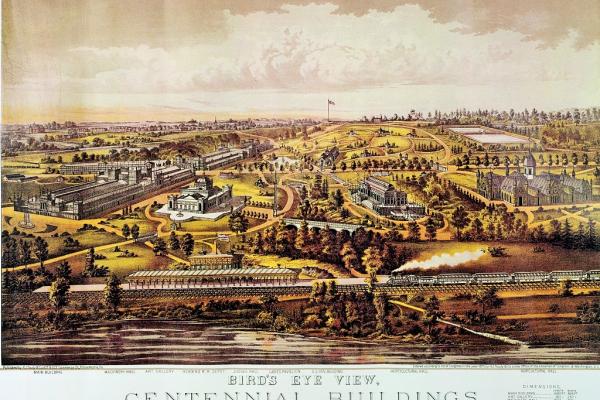
This idyllic image of the empty fairgrounds looks west from the Schuylkill River towards the American flag atop George’s Hill (today the site of the Mann Center for Performing Arts). In the foreground is the Reading Railroad’s depot for the fair.
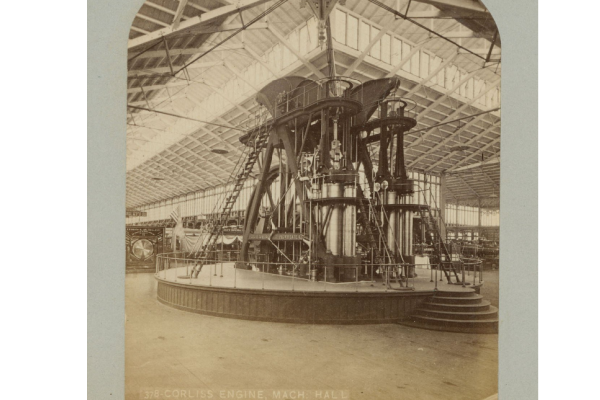
By means of shafts and underground tunnels, the 45-foot-tall Corliss Engine supplied steam power to operate some 800 machines at the Centennial Exposition. Housed in Machinery Hall, it symbolized America’s rise as an industrial power to be reckoned with.
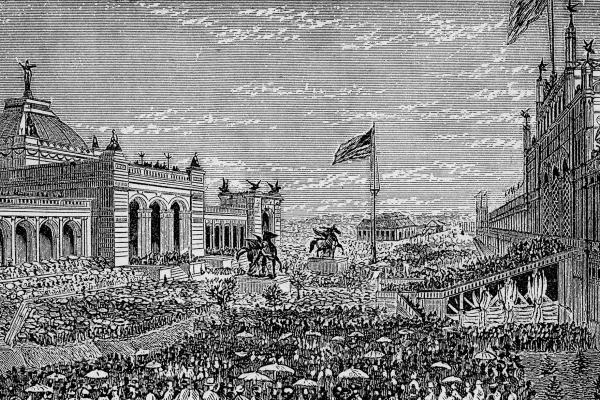
The Centennial Exposition opened in the rain on 10 May 1876. More than 100,000 people overflowed the Avenue of the Republic between Main Hall (right) and Memorial Hall to witness the inaugural ceremony.
This souvenir map shows the grounds and buildings of the 1876 Centennial Exposition. The Pennsylvania Railroad’s passenger depot appears at the bottom of the image; the Reading Railroad’s depot is seen (center-right) along the Schuylkill River.
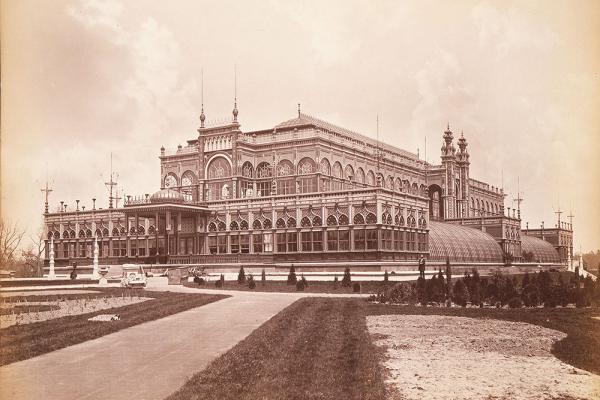
The smallest of the Exposition’s five main buildings, Horticultural Hall exhibited international flora and a model Victorian garden. The building’s design included elements influenced by Spanish Moorish (Islamic) architecture.
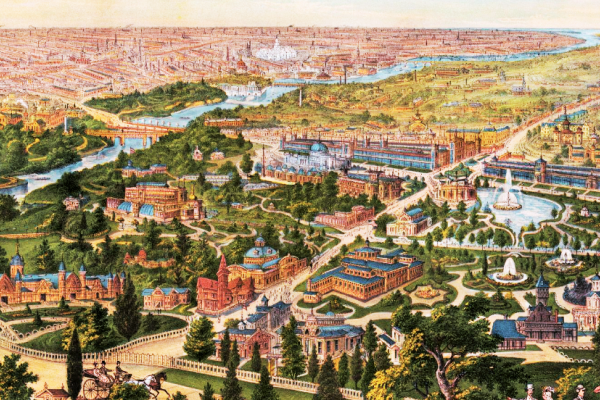
This colorful lithograph shows the landscape and buildings of the 1876 Centennial Exposition. The view is north to southeast and south, with the Schuylkill River on the left. The fair’s ornate Agricultural Building (lower left) straddles the northern boundary of the Exposition. Belmont Avenue bisects the Exposition from north to south, with Memorial Hall and Main Hall on the east side of that street (upper center) and Machinery Hall on the west side (upper right, behind the fountain).